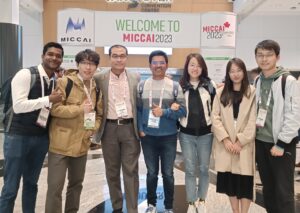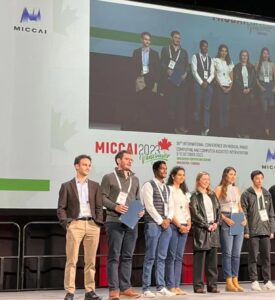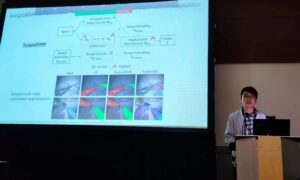We are thrilled to share a new research paper that’s just been published in *Communications Engineering*, showcasing a remarkable advancement in the field of origami-inspired tiny robots. 📰✨
**🔗 [Untethered Bistable Origami Crawler for Confined Applications](https://lnkd.in/gpJHEM-q)
### What’s the Buzz About?
This research introduces a **magnetically actuated bistable origami crawler**, a miniature robot designed to navigate and perform tasks in confined spaces which are challenging for traditional tethered or wired devices. 🚀
### Key Highlights:
– **Shape-Morphing Capability**: The crawler can transform between an undeployed locomotion state and a deployed load-bearing state, thanks to its bistable design. 🔧
– **Robust Locomotion**: Utilizes out-of-plane crawling for bi-directional locomotion and navigation, exhibiting robust navigation even in high-friction environments. 🛤️
– **Load-Bearing Applications**: The deployed state allows the crawler to execute tasks like microneedle insertion, opening up possibilities for medical interventions. 🩺
– **Untethered Operation**: Equipped with internal permanent magnets, this crawler operates without the need for external tethers, enhancing its maneuverability and miniaturizability. 🪝
### Why It Matters:
This technology could provide an alternative approach to solve problems encountered in confined environments, from medical procedures in the gastrointestinal tract to complex engineering tasks in tight spots. 🌐
### What’s Next:
The concept proposed in this work can also be adapted and applied to a variety of other deployable and load-bearing applications, such as fluid collection, stents, and airway support mechanisms. The proposed mechanism design can also be potentially integrated with other actuation methods like pneumatic systems for larger scale applications. 🌠
### Join the Conversation:
This work is a collaborative effort between Dr. Catherine Cai from National University of Singapore, Dr. Hui Huang from A*STAR – Agency for Science, Technology and Research and Prof. Hongliang Ren from The Chinese University of Hong Kong.
We’re eager to hear your thoughts on what we hope is an innovative research! How do you envision this technology being used in your field? Share your ideas and let’s discuss the future of robotics and origami engineering! 🤖📚
—
*Don’t forget to check out the full paper for a deep dive into the mechanics, applications, and implications of this incredible new technology. It’s a must-read for anyone interested in the cutting edge of robotics and engineering innovation!* 📖💡
























